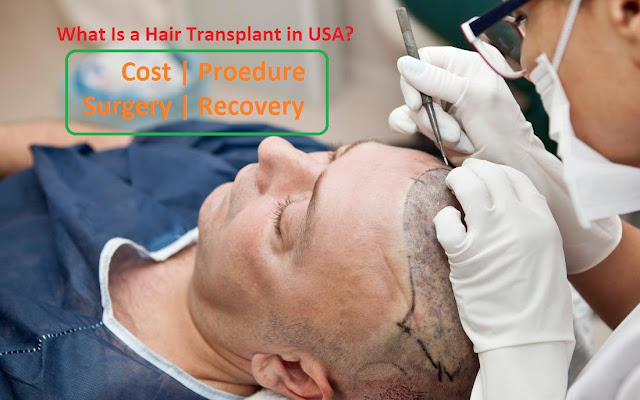What Is a Hair Transplant in USA? Cost, Procedure, Recovery & More
What is hair transplant?
Hair transplant is an inexpensive surgical procedure that moves hair from one part of the body to another. In the past, the results of hair grafts looked unnatural, and recovery was painful. Now, using the latest techniques and techniques, beautiful and affordable hair restoration is possible in NYC by top USA surgeons. And the best part is that the hair transplant surgeon provides affordable hair implants for men and women that are permanent when performed on a suitable candidate. The hair loss treatment you need is in the safe, reassuring hands of the best hair transplant doctor.
 |
| Hair Transplant USA Cost, Procedure, Recovery & More |
Who is not a good candidate for hair restoration?
You may not be the right candidate for hair restoration, or you must be very careful because a hair transplant may fail if you have:
Hair loss conditions such as frontal fibrosing alopecia have some underlying medical conditions that may affect treatment, such as immuno suppression. Unrealistic expectations about the efficacy of hair transplants.
Hair Transplant Cost in USA
The cost of hair transplant varies from country to country. Some practices charge a cost per graft basis, and others charge a similar rate per hair implant surgery. In NYC, the cost per graft hair transplant typically ranges from $5-$10/graft. Some parts of the country may charge as little as $1.5/corruption. Countries like India and Turkey offer packages with travel and hotel accommodation for a low price. Still, medical tourism can come at a cost, so patients must do careful due diligence.
How to prepare for hair transplant?
Avoid drugs and supplements that can thin the blood and increase bleeding during surgery, such as:
Aspirin Vitamin E Gingko Biloba Ibuprofen
Refrain from smoking for at least a week before your procedure. Taking vitamin C and vitamin K before your procedure can help limit and limit wound healing.
For body hair donor areas, if applicable, you will need to shave the area five days before the procedure to allow the hair to grow to the desired length for extraction. For hair donor areas of the scalp, you can leave the hair long to allow the surgical team to trim/shave according to the plan discussed for harvesting.
What is recovery from hair transplant surgery?
For proper recovery after hair transplant procedure, we recommend sticking to the following tips.
For the first night, sleep with your head elevated on several pillows or a recliner chair to prevent swelling, and place a towel under your head for possible light bleeding. You can gently clean your hair with water in a carefully poured basin over your head for up to five days, starting on the second day. On the sixth day, you can start bathing as usual, letting the water run over your head as usual.
Transplanted hairs often fall out with a crust as soon as five to eight days after the procedure. Hair follicles live in the scalp. The rest of the transplanted hair will fall out over the next two weeks. New hair shafts will begin to grow and continue to grow in a 4-6 month window. The end result is usually estimated at 12 months, although it may take longer for all the hair to grow out.
What are the reasons for hair transplant procedure?
There are many reasons why people want to undergo a hair transplant procedure, and the most common of them are:
High hairline. It makes your head look very prominent. It could be something you inherited, or it could be the result of hair loss. To manage this hair related problem,
The hair transplant surgeon carefully removes the hair follicles and transplants the hair to the top of the scalp to fill in the hairline or crown. Low hair density. Hair density determines how thick or thin your hair is. If you have less than 20 grafts per square centimeter, you may be dealing with low hair density. People with this hair condition can see their scalp easily. Hair transplant surgeon uses a high-density graft placement technique to secure excellent, long-lasting results. Big head. It is possible to shrink an extremely large forehead with a hair transplant procedure. Follicular unit extraction (FUE) may be an option if you want your forehead to be in proportion to the rest of your facial features.
Comments
Post a Comment